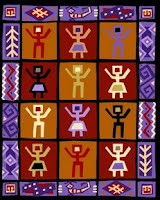 Open source IT applications in healthcare is a relatively new topic as information technology doesn’t creep into medicine field that fast and widespread, especially in the practice of small clinics.
Open source IT applications in healthcare is a relatively new topic as information technology doesn’t creep into medicine field that fast and widespread, especially in the practice of small clinics.[Problems faced] Similar to the issue of standardization of linux desktop or other environments for that matter, open source healthcare standardization faces difficulty in interoperability and sharing of data. This is especially true when the open medical IT world is in infancy era.
[Ready? Not quite so.] Members of medical associations are not yet exposed to a few things that are essential elements of the healthcare system like electronic medical record (EMR) or electronic health record (EHR) and clinic efficiency. When even the most infant stage has not been attained, the water isn’t muddy enough to create more creative life form. This is currently what’s happening in many of the developing countries.
[Open source vs. Proprietary] And quite typically enough, infant stages of IT medical applications are usually dominated by proprietary solutions because these closed source solutions offer rigid and seemingly more user-friendly interface even though they’re usually more costly. Not having to tweak with difficult and messy coding of open source feeds well for many people looking for “fire-and-forget” application. Doctors and medical physicians are just human beings who could be as short-sighted. Good things don’t come easy. Those that come easy aren’t usually good. But hey, “I want it and I want it now!” is the attitude of spoilt modern generation. In the end, proprietary are chosen over open source solutions, initially. Almost always the case.
[Idealistic view] The idealistic solution is that the open source solutions will be the de facto standard used by the majority of the doctors. One day. Hopefully sonner.
[History repeats itself] This is a long and challenging task. With members from the developing nations learn from the mistakes made by those in the developed nations. If human beings learn well, we don’t have to repeat the mistakes.
[Evidence-based medicine & Open source] Dr. Molly Cheah, president of Primary Care Doctors’ Organization Malaysia (PCDOM), puts it this way: “Using open source in healthcare is almost similar as evidence-based medical practice processes. How can the processes in medicine be improved? You share.” I find this rather interesting and in line with many of the evidence-based traditional medicine practice. You find a better treatment method or a better explanation of disease mechanism and you pass it on to others so that others can improve upon it and keep passing it on to others too. “There is freedom to use, improve, share and collaborate.”
 [My vision of IT usage in medicine] A mature system of medical IT software package should not be just handling of patients’ records and streamlining clinic or hospital efficiency, it should also cater for analysis of symptoms, patients’ profiles, with that of syndromes. For example, the package should help to analyze how two similar patients differ in treatment reactions and how different body constituents or syndromes give rise to different efficacy of the treatments and so on. From the point of view of a physician, this is what counts for the benefit of the patients.
[My vision of IT usage in medicine] A mature system of medical IT software package should not be just handling of patients’ records and streamlining clinic or hospital efficiency, it should also cater for analysis of symptoms, patients’ profiles, with that of syndromes. For example, the package should help to analyze how two similar patients differ in treatment reactions and how different body constituents or syndromes give rise to different efficacy of the treatments and so on. From the point of view of a physician, this is what counts for the benefit of the patients.For now, I can’t wait to lay my fingers on Gnu General Public License (GPL) software…
Links:
1) Open Source Health Care Alliance, www.oshca.org
2) International Open Source Network an initiative of the United Nations Development Programme's (UNDP) Asia Pacific Development Information Programme (APDIP), www.iosn.net
3) Primary Care Doctors' Organisation Malaysia, www.pcdom.org.my

No comments:
Post a Comment